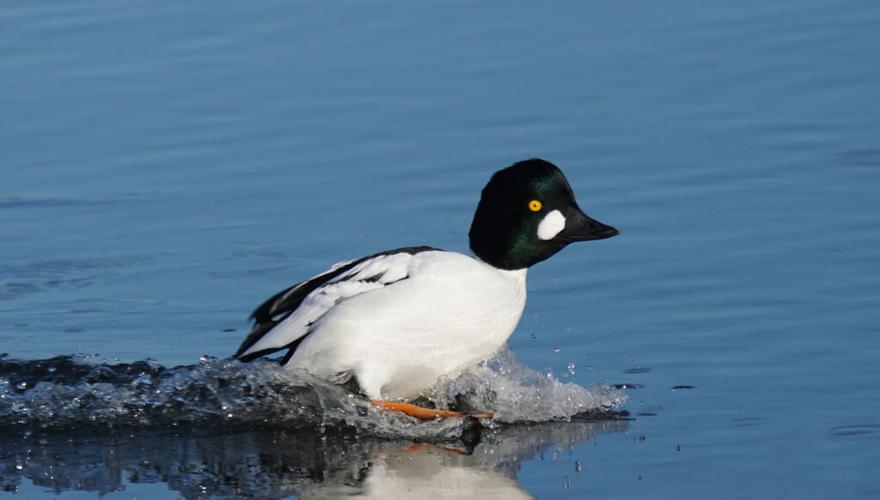The Mississippi River is a bustling place this time of year. However, it's not marine traffic that fills up the water, but over 300 species of migrating birds.
"The Mississippi River is important as a migration corridor because of its north-south orientation," said Tim Schlagenhaft, Upper Mississippi River Program Manager for the Audubon Society. "The river has a lot of diversity of habitats. It offers a lot of diversity and meets the needs of a lot of different bird species."
Big backwater areas - including vegetation such as large tracts of floodplain forest - are home to older large trees and different kinds of wetlands and flowing channels.
This time of year, as ice starts coming off the water and channels begin to open up, migrating waterfowl can be seen making the trip north to their breeding grounds. Schlagenhaft said the birds will stop in the area to rest, feed and essentially fuel up for their trek up north. But what makes this such a fun time to see the birds is that many are wearing their best colors.
"A lot of the birds are in their mating plumage," he said. "So you see some really neat colored birds such as shovelers and multiple species of scaup."
As spring progresses, Schlagenhaft said the river becomes important for songbirds.
"They'll start showing up in late April or early May and a lot of those birds will stay and nest here," he said. "If you walk around in any floodplain forest, you'll hear these birds and you'll observe them singing, including rare birds such as the red-shouldered hawk found in the forest by the river near Red Wing."
Not to be outdone, there are plenty of species of waterfowl and wading birds to be seen this time of year. Great blue herons and other wading bird species can be found feeding on the shallow water areas along the riverbank edges on invertebrates.
With a strong diversity in river habitats, there are hundreds of bird species to find at any given time for the avid or casual bird watcher. All it takes is a stroll down to the river or grabbing a pair of binoculars at an overlook to spot some of these migrating birds.











(0) comments
Welcome to the discussion.
Log In
Thank you for taking part in our commenting section. We want this platform to be a safe and inclusive community where you can freely share ideas and opinions. Comments that are racist, hateful, sexist or attack others won’t be allowed. Just keep it clean. Do these things or you could be banned:
• Don’t name-call and attack other commenters. If you’d be in hot water for saying it in public, then don’t say it here.
• Don’t spam us.
• Don’t attack our journalists.
Let’s make this a platform that is educational, enjoyable and insightful.
Email questions to mthorud@orourkemediagroup.com.